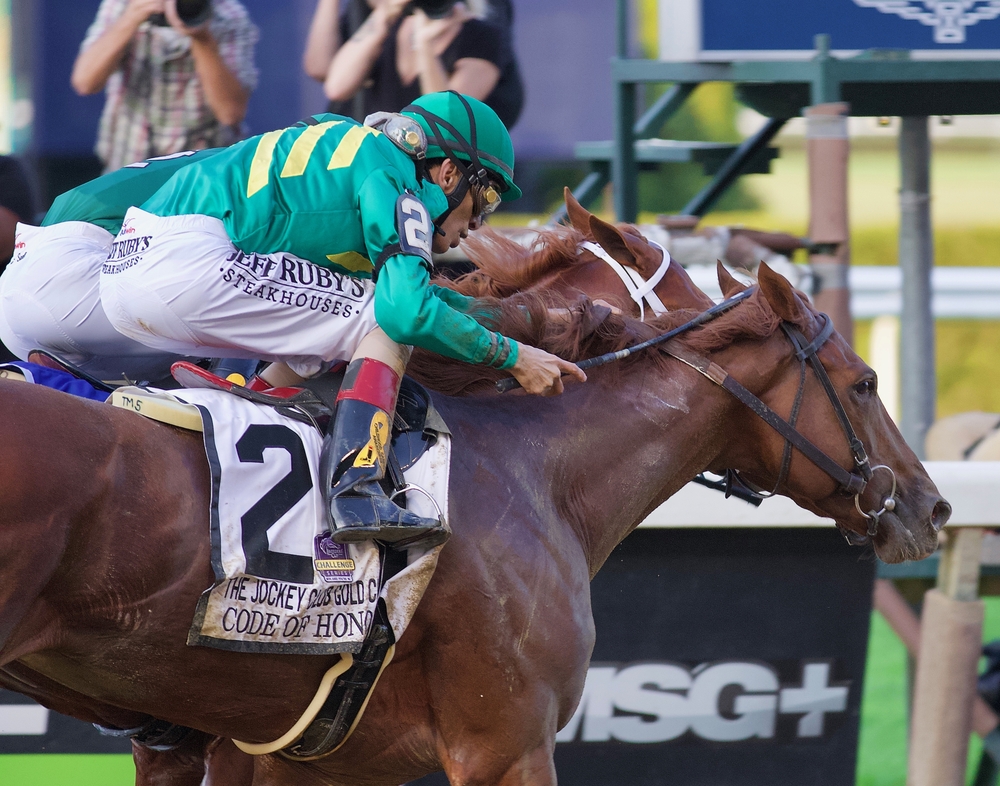A betting margin is a term used in the betting industry to refer to the difference between the odds of an event and the actual probability of that event occurring. It is also commonly known as the bookmaker’s commission or vig. Bookmakers use margins to ensure that they make a profit regardless of the outcome of the event.
Margins are calculated by adding the inverse of the odds of all possible outcomes of an event and then subtracting one. The resulting number represents the percentage of the total amount wagered that the bookmaker expects to keep as profit. Understanding margins is important for bettors because it can affect the value of the odds they are offered and can ultimately impact their potential winnings.
Understanding Betting
Betting is a popular activity that involves placing a wager on the outcome of a particular event. The outcome of the event can be anything from a sports game to an election. Betting is a form of gambling that involves a punter placing a bet on a particular market. A market is a collection of odds that are offered by a bookmaker. The odds represent the probability of a particular outcome occurring.
When a punter places a bet, they are essentially backing a particular outcome. If the outcome occurs, the punter wins the bet. If the outcome does not occur, the punter loses the bet. The amount that a punter can win is determined by the odds that they bet on. The higher the odds, the more money a punter can win.
To make an informed bet, a punter needs to perform a thorough analysis of the market. This involves looking at the odds that are being offered and determining whether they represent value. Value is determined by comparing the odds to the probability of the outcome occurring. If the odds are higher than the probability, then the bet represents value.
One of the key concepts in betting is the betting margin. The betting margin is the difference between the odds that a bookmaker offers and the true probability of the outcome occurring. The margin is essentially the bookmaker’s profit. The higher the margin, the less value there is for the punter.
In order to calculate the margin, a punter needs to look at the odds for all possible outcomes. This is known as a 100% market or book. The margin is calculated by taking the inverse of the odds for each outcome, adding them together, and subtracting one.
Understanding betting is essential for anyone who wants to be successful at it. By performing a thorough analysis of the market and understanding the concept of value, a punter can increase their chances of making a profit.
The Concept of Margin in Betting
In the world of betting, the concept of margin refers to the difference between the odds offered by a bookmaker and the true probability of an event occurring. It is how bookmakers make a profit and is often referred to as the “bookmaker’s margin” or “vig”.
The margin is calculated by adding up the implied probabilities of all possible outcomes for an event and then subtracting that total from 100%. For example, if a bookmaker offers odds of 2.0 for both teams to win a football match, the implied probability of each team winning would be 50%. Therefore, the bookmaker’s margin for this market would be 100% – (50% + 50%) = 0%.
Margins can be expressed as a percentage or as a value. A 5% margin means that the bookmaker is taking 5% of the total amount wagered as profit. On a £100 bet, the bookmaker would take £5 as profit.
It’s important to note that margins can vary between bookmakers and between different markets. Some bookmakers may offer lower margins on popular markets to attract customers, while others may offer higher margins on less popular markets.
Understanding margins is important for bettors because it allows them to compare odds and find value. Bettors can calculate the implied probability of an event occurring from the odds offered by a bookmaker and then compare it to their own assessment of the true probability. If they believe the bookmaker’s odds are too low, they may be able to find value by placing a bet.
In conclusion, margins are an important concept in betting that allows bookmakers to make a profit. Bettors should be aware of margins and how they can affect their bets. By understanding margins, bettors can compare odds and find value, which can increase their chances of making a profit.
Betting Margin in Different Sports
Betting margins can vary depending on the sport you are betting on. Here is a breakdown of betting margins in different sports:
Football
Football is one of the most popular sports to bet on, and as a result, bookmakers have low margins for this sport. The margins for football can be as low as 2-3%.
NFL
The margins for NFL games are slightly higher than football, with bookmakers typically taking a margin of around 4-5%.
Basketball
Basketball is another popular sport to bet on, and the margins for this sport can vary depending on the league. For example, the margins for NBA games can be as low as 2-3%, while the margins for European basketball leagues can be as high as 7-8%.
Tennis
Tennis is a sport with low margins, with bookmakers typically taking a margin of around 3-4%.
Hockey
Hockey is another sport with low margins, with bookmakers typically taking a margin of around 4-5%.
Soccer
Soccer is another popular sport to bet on, and the margins for this sport can vary depending on the league. For example, the margins for Premier League games can be as low as 2-3%, while the margins for lower leagues can be as high as 7-8%.
Rugby
Rugby is a sport with low margins, with bookmakers typically taking a margin of around 4-5%.
Baseball
Baseball is another sport with low margins, with bookmakers typically taking a margin of around 4-5%.
Handball
Handball is a sport with low margins, with bookmakers typically taking a margin of around 4-5%.
It is important to note that these margins are not set in stone and can vary depending on the bookmaker and the specific game being bet on. It is always a good idea to shop around and compare margins between different bookmakers to ensure you are getting the best value for your bets.
Impact of Betting Margin on Profit
Betting margin is the percentage of the total amount wagered by bettors that is kept by bookmakers as their profit. The higher the betting margin, the lower the potential profit for the bettor. Understanding the impact of betting margin on profit is crucial for any bettor looking to make a profit.
In simple terms, the betting margin is the difference between the odds offered by the bookmaker and the true probability of an event occurring. The higher the margin, the lower the odds offered by the bookmaker, and the lower the potential profit for the bettor.
For example, if a bookmaker offers odds of 2.0 for a particular event, the true probability of that event occurring is 50%. However, if the bookmaker has a margin of 10%, the true odds are actually 1.8 (50% divided by 0.9), meaning the bettor is getting lower odds and potentially lower profits.
To calculate the impact of betting margin on profit, it’s important to understand the difference between gross profit and net profit. Gross profit is the total amount of money made from a bet, while net profit is the amount of money made after deducting the original stake.
For example, if a bettor places a £10 bet with odds of 2.0 and wins, the gross profit is £10 (original stake plus £10 profit). However, if the bookmaker has a margin of 10%, the net profit is only £9 (gross profit minus 10% margin).
To maximise profitability, it’s important for bettors to look for bookmakers with low margins. This can be done by comparing the odds offered by different bookmakers for the same event. The lower the margin, the higher the potential profit for the bettor.
In conclusion, understanding the impact of betting margin on profit is essential for any bettor looking to make a profit. By looking for bookmakers with low margins and calculating the potential net profit, bettors can maximise their profitability and make more informed betting decisions.
Betting Margin Calculation
Using a Margin Calculator
Calculating the betting margin can be a tedious task, especially if you have to do it manually. Fortunately, many online margin calculators can do the job for you. These tools are simple to use and can save you a lot of time.
To use a margin calculator, you need to enter the odds for all possible outcomes of an event. The calculator will then convert the odds into probabilities and calculate the bookmaker’s margin. It will also tell you the fair payout, which is the amount you would receive if there were no margin.
Manual Calculation
If you prefer to calculate the betting margin manually, you can use the following formula:
Betting Margin = (1 / Decimal Odds Outcome 1) + (1 / Decimal Odds Outcome 2) + … – 1
For example, let’s say a bookmaker offers the following odds for a football match:
- Outcome 1: 2.50
- Outcome 2: 1.80
To calculate the margin, we would use the formula:
Betting Margin = (1 / 2.50) + (1 / 1.80) – 1 = 0.2083
This means that the bookmaker’s margin for this event is 20.83%.
It’s important to note that the higher the margin, the lower the value for a bettor. Therefore, it’s essential to compare margins between bookmakers to find the best value.
In conclusion, whether you use a margin calculator or calculate the margin manually, understanding the betting margin is crucial for any bettor. By knowing the margin, you can make more informed decisions and find the best value for your bets.
Financial Implications of Betting Margin
Betting margin is an important concept to understand when it comes to sports betting. It refers to the percentage of the total payout that a bookmaker retains as profit. In essence, the margin is the difference between the odds offered by the bookmaker and the true odds of an event occurring.
The financial implications of betting margin can be significant for both bookmakers and bettors. For bookmakers, a higher margin means a higher profit margin, while a lower margin means a lower profit margin. This is because bookmakers make money by offering odds that are lower than the true odds of an event occurring. The difference between the true odds and the odds offered by the bookmaker is the margin.
For bettors, a higher margin means that they will receive lower payouts for winning bets. This is because the bookmaker is retaining a larger percentage of the total payout as profit. Conversely, a lower margin means that bettors will receive higher payouts for winning bets.
It is important to note that betting margin is not the only factor that affects the profitability of sports betting. Other factors such as costs, expenses, taxes, and borrowed money can also have an impact on the bottom line. For example, bookmakers may have to pay taxes on their profits, which can eat into their net income. Similarly, bettors may have to pay fees or commissions to betting exchanges or other third-party services, which can reduce their profits.
In addition, bookmakers and bettors alike must be aware of their operating expenses, such as salaries, rent, and marketing costs. These expenses can also impact the bottom line and must be factored into any financial analysis.
Overall, understanding the financial implications of betting margin is essential for anyone involved in sports betting. By understanding how margin affects profits and payouts, bookmakers and bettors can make more informed decisions and maximise their returns.
Betting Margin in the Betting Industry
Betting margin is a term used in the betting industry to describe the amount of money that betting companies charge their customers to place bets. It is also known as the “bookmaker’s commission” and is the difference between the odds offered by a bookmaker and the true odds of an event occurring.
Betting margins are an essential aspect of the betting industry as they allow bookmakers to make a profit. The margin is calculated by adding up the implied probabilities of all possible outcomes for an event and subtracting them from 100%. The result is the bookmaker’s margin, which is the percentage of the total amount wagered that the bookmaker expects to keep as profit.
Investors and equity analysts pay close attention to betting margins when evaluating the performance of betting companies. A high betting margin indicates that a company is charging high prices for its services, which can lead to increased profits. However, a high margin may also indicate that a company is not offering competitive odds, which can lead to a loss of customers to competitors.
Business owners in the betting industry must carefully balance their betting margins with the need to remain competitive. A high margin can lead to increased profits, but it can also drive away customers. Conversely, a low margin can attract customers, but it can also lead to lower profits.
Commission rates are another factor that affects betting margins. In some jurisdictions, betting companies are required to pay a commission on the amount wagered. This commission can be as high as 15%, which can significantly impact the bookmaker’s margin.
Resources also play a crucial role in determining betting margins. Betting companies with access to more data and information can offer more accurate odds, which can lead to a lower margin. Conversely, companies with limited resources may need to charge higher margins to cover their costs and remain profitable.
In conclusion, betting margin is a critical metric in the betting industry. It is an essential factor in determining the profitability of betting companies and can have a significant impact on their performance. Business owners, investors, and analysts must carefully consider betting margins when evaluating the performance of betting companies.
Betting Strategies for Lower Margins
When it comes to sports betting, lower margins are always better for the bettor. A lower margin means that the bookmaker is taking less of a cut, leaving more money for the bettor to potentially win. Here are some betting strategies that can help you take advantage of lower margins and get the best odds possible:
1×2 Betting
One popular betting strategy for low margins is 1×2 betting. This type of bet involves picking the winner of a match, with the options being a home win, an away win, or a draw. Since there are only three possible outcomes, the margin for this type of bet is often lower than other markets.
Handicap Betting
Another strategy for low margins is handicap betting. In this type of bet, a handicap is given to the underdog team to level the playing field. This means that even if the underdog loses the match, they can still win the bet if they beat the handicap. This type of bet can be particularly useful when the margin is low, as it can give you better odds on the favourite team.
Two-Way Market
A two-way market is a bet that only has two possible outcomes, such as over/under or yes/no. Since there are only two options, the margin for this type of bet is often lower than other markets. This can be a good option for bettors looking for low margins.
Overall, the key to taking advantage of low margins is to do your research and find the best odds possible. By using these betting strategies, you can increase your chances of winning and get the most value out of your bets.
Other Relevant Concepts
When it comes to understanding betting margins, there are several other concepts that are important to be aware of. These concepts include:
- Draw: In some sports, such as football, it is possible for a match to end in a draw. When this happens, the bookmaker will typically return the stake to the bettor. However, it is important to note that some bookmakers may still apply a margin to these bets.
- Product Lines: Bookmakers offer a variety of product lines, including sports betting, casino games, and poker. Each of these product lines may have different margins, depending on the level of competition and the amount of overhead required to operate the product.
- Lenders: Bookmakers may need to borrow money in order to operate their business. Lenders may charge interest rates that can impact the bookmaker’s profit margins.
- ROA: Return on assets (ROA) is a financial metric that measures the profitability of a company’s assets. Bookmakers may use this metric to evaluate the profitability of their betting operations.
- Finance: Bookmakers may need to finance their operations in order to cover expenses such as overhead, investments, and other expenses. The cost of financing can impact the bookmaker’s profit margins.
- Broker: In some cases, bookmakers may use brokers to help them place bets. Brokers may charge fees that can impact the bookmaker’s profit margins.
- Exchange: Some bookmakers operate exchanges, which allow bettors to place bets against each other. These exchanges may have different margins than traditional bookmakers.
- Favourite: The favourite is the team or player that is expected to win a match. Bookmakers may adjust their margins based on the popularity of the favourite.
- Stable: In horse racing, a stable is a group of horses that are owned by the same person or organisation. Bookmakers may adjust their margins based on the performance of certain stables.
- High Margin: High margin bets are bets that have a high margin applied by the bookmaker. These bets may be less attractive to bettors due to the lower value.
- Overhead: Overhead refers to the expenses that a business incurs in order to operate. Bookmakers may need to factor in overhead expenses when setting their margins.
- Investments: Bookmakers may need to make investments in order to improve their operations or expand their offerings. These investments can impact the bookmaker’s profit margins.
- Retail: Bookmakers may operate retail locations in addition to their online operations. These retail locations may have different margins than online operations.
- Other Expenses: In addition to overhead and investments, bookmakers may incur other expenses such as marketing and legal fees. These expenses can impact the bookmaker’s profit margins.
- Types of Profit Margins: There are several types of profit margins, including gross profit margin, operating profit margin, and pre-tax profit margin. Bookmakers may use different types of profit margins to evaluate the profitability of their operations.
Overall, understanding these concepts can help bettors make more informed decisions when placing bets and can help bookmakers set their margins more effectively.
Frequently Asked Questions
What is a betting margin and how is it calculated?
A betting margin is the percentage of the total payout that a bookmaker keeps as profit. It is calculated by adding the implied probabilities of all possible outcomes and subtracting that total from 100. For example, if a bookmaker offers odds of 2.00 for both teams to win, the implied probability for each team is 50%. The total implied probability is 100%. If the bookmaker’s margin is 5%, the total payout will be 95%, and the bookmaker’s profit will be 5%.
What is the difference between a betting margin and a profit margin?
A betting margin is the percentage of the total payout that a bookmaker keeps as profit, while a profit margin is the percentage of revenue that a company keeps as profit. The betting margin is specific to the sports betting industry, while the profit margin is a general business concept.
How do bookmakers determine their betting margins?
Bookmakers determine their betting margins based on several factors, including the level of competition in a particular market, the type of sport or event being offered, and the expected volume of bets. Bookmakers also consider their own expenses, such as salaries, rent, and marketing costs, when setting their margins.
What impact does a high betting margin have on my potential winnings?
A high betting margin means that the bookmaker is keeping a larger percentage of the total payout as profit. This reduces the potential winnings for the bettor. A lower betting margin means that the bookmaker is keeping a smaller percentage of the total payout as profit, which increases the potential winnings for the bettor.
Can I use a sports betting margin calculator to calculate my betting margin?
Yes, there are several sports betting margin calculators available online that can help you calculate your betting margin. These calculators take into account the odds for all possible outcomes and calculate the bookmaker’s margin based on those odds.
Is it possible to place profitable bets when the betting margin is high?
Yes, it is possible to place profitable bets when the betting margin is high, but it is more difficult. A high betting margin means that the bookmaker is keeping a larger percentage of the total payout as profit, which reduces the potential winnings for the bettor. To place profitable bets when the betting margin is high, bettors must find value in the odds offered by the bookmaker and make informed decisions based on their analysis of the event.





